The giant of coffee beans, how to be selected into the boutique coffee, how to roast and cook well?
Giant in coffee beans
The giant bean (Maragogype) is a variant of Tibica (the native Arabica bean); its trees, leaves, and fruits are much larger than the average Arabica. Is it clear from the comparison of Caturra (left) & Giant Elephant Bean (right) coffee fruit/leaf that their enormous size is comparable?
Coffee fruit comparison
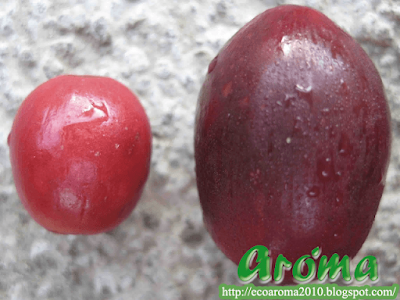
Kadura on the left, Giant Elephant Bean on the right.
Coffee leaves compare
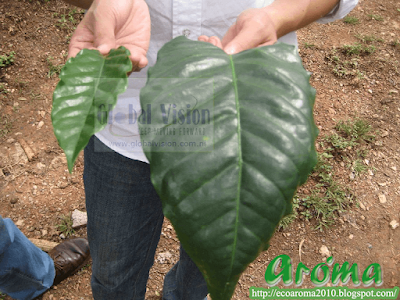
Kadura on the left, Giant Elephant Bean on the right.
If the foregoing description is not enough to highlight the size of the giant bean, then let the numbers speak for themselves. Let's look at the coffee industry's usual measurement methods.
The size of coffee beans is measured in 1/64 inch units.
The size of the international custom range is between 9 and 22
Fraction represents mesh diameter; pea is molecule. Large bean eyes have large molecules; small bean eyes have small molecules
Example 1:16 mesh green beans refer to coffee green beans that can pass through a 17/64 (inch) screen but get stuck in a 16/64 (inch) mesh diameter (diameter) screen
Example 2:18 mesh green beans refer to coffee green beans that can pass through a 19/64 (inch) screen but get stuck in an 18/64 (inch) mesh diameter (diameter) screen
Converted to metric system, 17 mesh is 6.75mm, 18 mesh is 7mm, 19 mesh is 7.5mm…Is it clearer to know the size of raw beans?
Let's put aside the hard math and look at the real world. Take Colombia, which attaches great importance to green bean size as coffee rating standard, for example. The top-grade coffee bean (i.e., the largest green bean) is Supremo, and the rating standard is 17 - 18 mesh size. 98% of the introduced giant elephant beans are above 20 mesh in size. In other words, in Colombia, it has long surpassed Supremo.
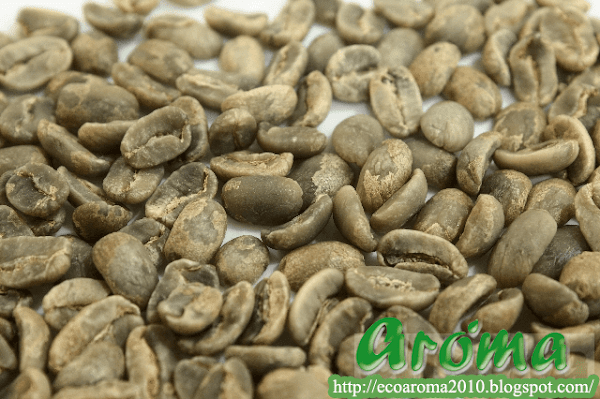
Giant elephant beans Raw beans (before baking) Amazing size
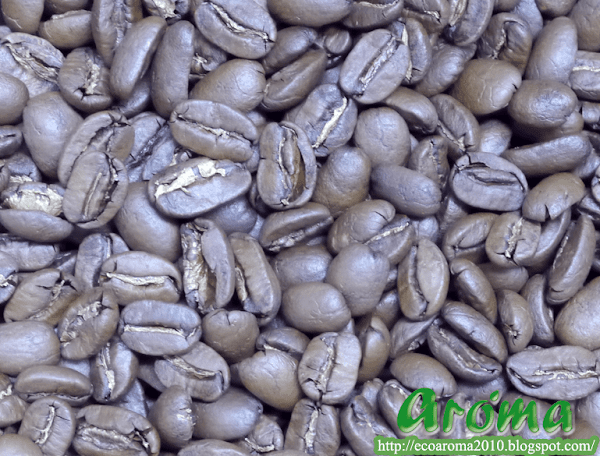
Giant beans cooked beans (baked_medium baked) larger size
You don't usually see these beans on the market, do you?
Rare quantity, high price, has always been the fate of high-quality coffee beans. Compared to the giant elephant beans, which had a lower yield than other varieties, the price of fine beans was naturally high. The so-called good things often grind, the following collection from the actual visit to the market reaction, enough to get a glimpse.
Raw beans are expensive: water can carry a boat, but it can also overturn it. Giant elephant beans are unique
Conditions include factors such as too high trees are difficult to harvest and too large fruits are difficult to wash (related data refer to the overview of fine (top) coffee), resulting in low willingness of coffee farmers to plant. Then the output is scarce and the material is scarce.
Baking is not easy: large beans are extremely important to the quality of the roaster and the skill of the baker
For a tough test. A little carelessness, the beans out of the oven are either raw or too ripe. Even more frightening is the uneven baking, raw and cooked.
Conceptual error: many coffee books, textbooks mentioned the shortcomings of the bean…
Although the beans are large and beautiful, the contents are thin and the flavor is dull. Indeed, in the early days and even today, bean merchants have introduced beans because of their beautiful size to satisfy consumers who value their appearance. Unfortunately, as a result of cost considerations, most of the imported beans are low-altitude beans. Just in line with coffee critics and the owners of Yun Yun roasters and cafes, like beans are not good beans concept.
Two or three things.
[High altitude] Planting environment above 1500m…
Like tea leaves, high-altitude giant beans mature two months longer than lower-altitude beans, during which the coffee fruit is continuously enriched with components from photosynthesis. This is the key to the deliciousness of giant beans compared to ordinary beans.
[Frequent screening] Giant elephant beans because of their huge body, size spacing is also much larger than other beans. Therefore, manual selection and strict quality control can ensure that 98% of raw beans size is greater than 20 mesh
Baking machine with good temperature locking function
The direct relationship (raw beans purchased from coffee farmers) allows aroma to obtain high-quality raw beans from the producing estate at reasonable prices. Avoid unreasonable prices caused by the distribution of intermediate dealers.
[Baking conditions] Large beans like this are not easy to heat, heat dissipation is difficult, no such bean baking experience or lack of a powerful baking machine with temperature locking function, will easily produce beans in the baking process too raw, too ripe, or the same pot baked beans raw, cooked uneven phenomenon. From the top ripe bean image can be seen…color approaching consistent bean appearance, representing a successful baking process.
Unworthy industry mixed fake "Blue Mountain"
Because of its large size, it sells well. Many unscrupulous industries use elephant beans in whole or in part as blue mountain beans and sell them to downstream bakeries/cafes for five times the price; ultimately, they pass on to consumers. Japanese bean merchants have been directly involved in the Blue Mountain production area for a long time. Most of the good quality Blue Mountain beans have already been under their control. How can other national bean merchants get really good Blue Mountain beans? In particular, in recent years the Blue Mountain area has suffered from serious insect infestation, and with the rampant and ineffective suppression of the diamond fruit insect, there are fewer and fewer really good blue mountain beans than in previous years. Japanese consumers have a long history of drinking high-quality beans, and average national income is among the highest. The possibility that Japanese merchants resell blue mountain beans that can be sold at higher prices in Japan to other countries at lower prices is very small.
Many people commented that Jamaica's national treasure blue mountain beans have a "silky" flavor, meaning that they are not bitter, sour, sweet or astringent; the taste is moderate and mild, and for the public who used to be used to weak coffee, they are precious coffee beans that want to taste quickly. Today, coffee tasting has evolved to emphasize the "beauty of personality, regional flavor", pay attention to different Arabica varieties in different terroir conditions to cultivate the special flavor. In addition to the Blue Mountains,
If you can't really appreciate the good taste of coffee, there is also a great possibility that you can buy [Giant Elephant Bean] at an unreasonable high price.
Special flavor, like tea
If traditional, strong, bitter coffee doesn't appeal to you, try the giant elephant bean. Nutty aromas, clean apple/lemon acidity; full, smooth palate and lingering throat finish. With hints of bitter apricot and chocolate.
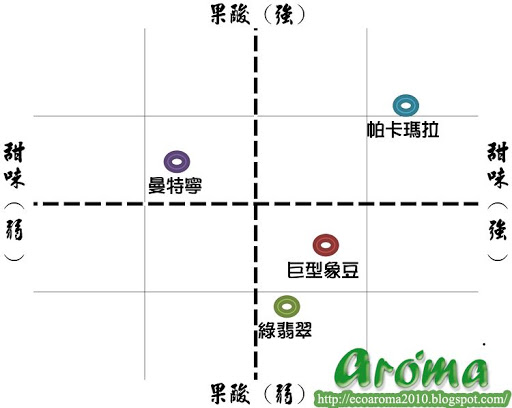
Important Notice :
前街咖啡 FrontStreet Coffee has moved to new addredd:
FrontStreet Coffee Address: 315,Donghua East Road,GuangZhou
Tel:020 38364473
- Prev

Sumatra has developed a unique wet planing method to give its coffee beans a unique regional aroma.
Professional coffee knowledge exchange more coffee bean information please follow the coffee workshop (Wechat official account cafe_style) except Manning English Mandheling is very special. Manning coffee raw beans also have their own special and unique global characteristics, that is, wet planing (wet-hulled) treatment. The treatment plant buys preliminary peel, pulp and moist seeds from coffee farmers.
- Next
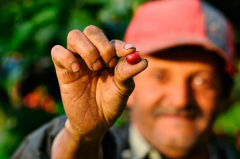
The new species derived from the cross between elephant beans and different varieties emit a completely different charm from the past.
Professional coffee knowledge exchange more coffee bean information please follow the coffee workshop (Wechat official account cafe_style) Nicaraguan coffee has been forgotten in Taiwan in recent years. Nicaraguan coffee is rarely seen. In fact, the growing conditions in Nicaragua are not inferior to those in Central American countries. The coffee produced is characterized by a refreshing and balanced taste, and what is amazing is the coffee produced by small farmers.
Related
- Detailed explanation of Jadeite planting Land in Panamanian Jadeite Manor introduction to the grading system of Jadeite competitive bidding, Red bid, Green bid and Rose Summer
- Story of Coffee planting in Brenka region of Costa Rica Stonehenge Manor anaerobic heavy honey treatment of flavor mouth
- What's on the barrel of Blue Mountain Coffee beans?
- Can American coffee also pull flowers? How to use hot American style to pull out a good-looking pattern?
- Can you make a cold extract with coffee beans? What is the right proportion for cold-extracted coffee formula?
- Indonesian PWN Gold Mandrine Coffee Origin Features Flavor How to Chong? Mandolin coffee is American.
- A brief introduction to the flavor characteristics of Brazilian yellow bourbon coffee beans
- What is the effect of different water quality on the flavor of cold-extracted coffee? What kind of water is best for brewing coffee?
- Why do you think of Rose Summer whenever you mention Panamanian coffee?
- Introduction to the characteristics of authentic blue mountain coffee bean producing areas? What is the CIB Coffee Authority in Jamaica?

